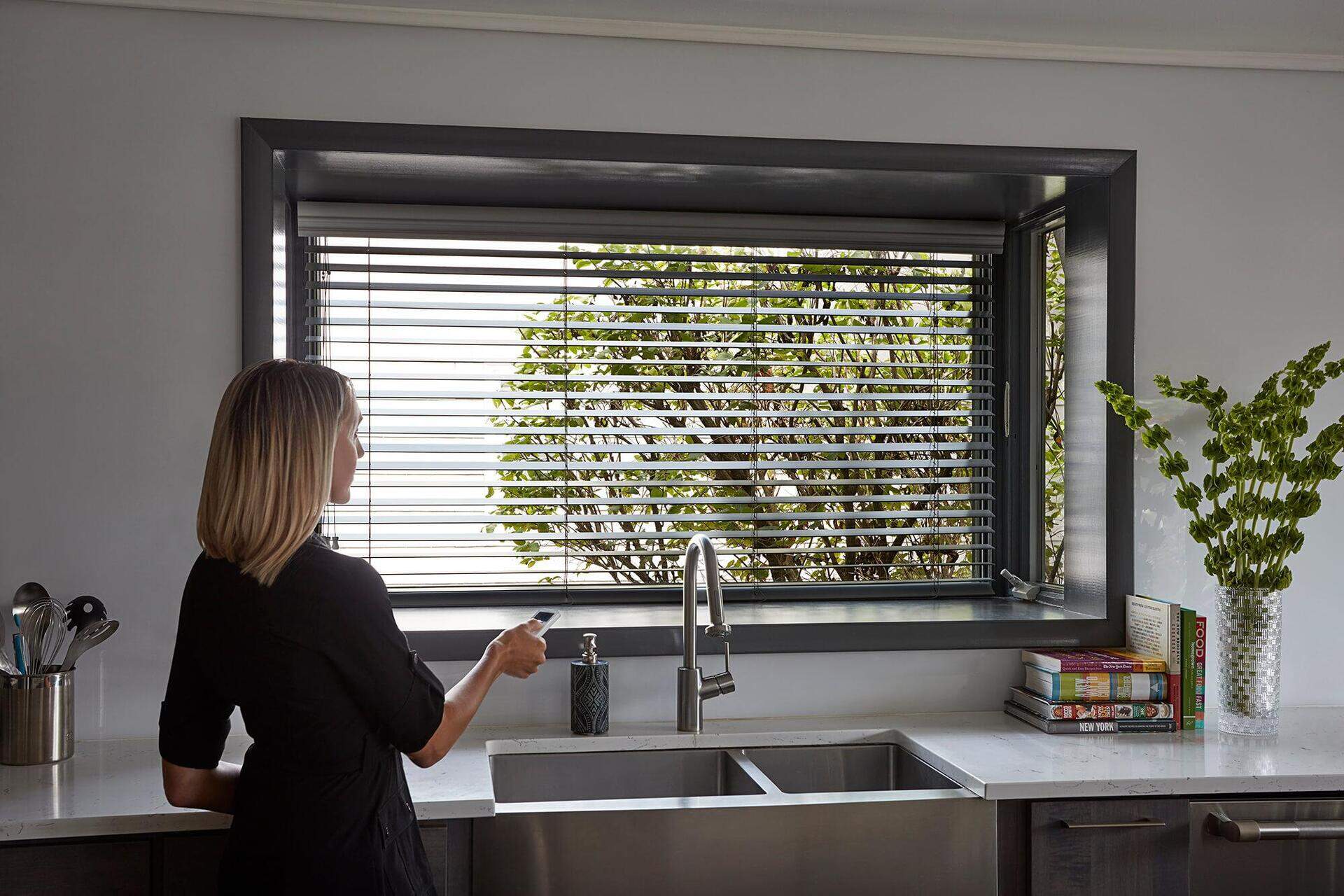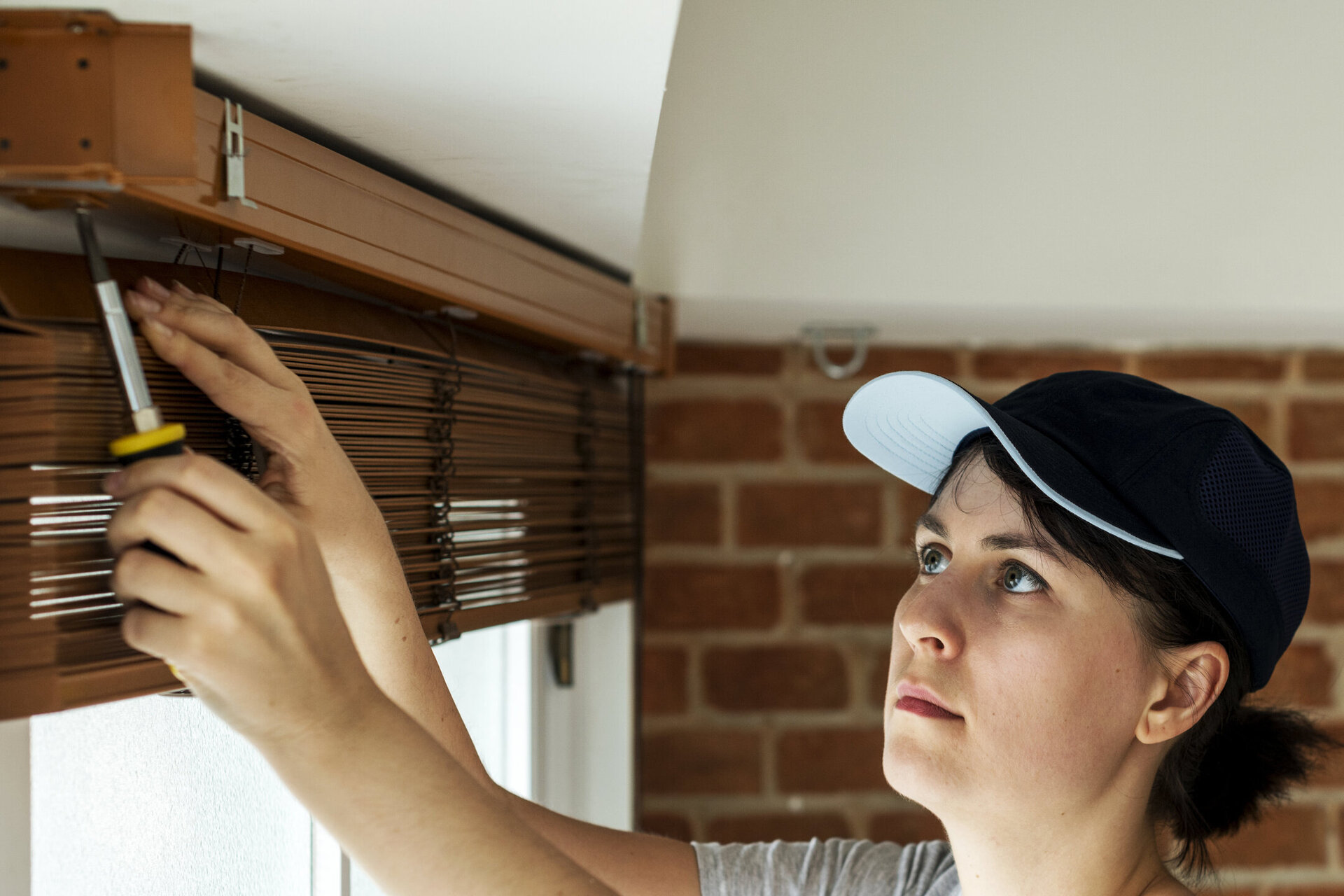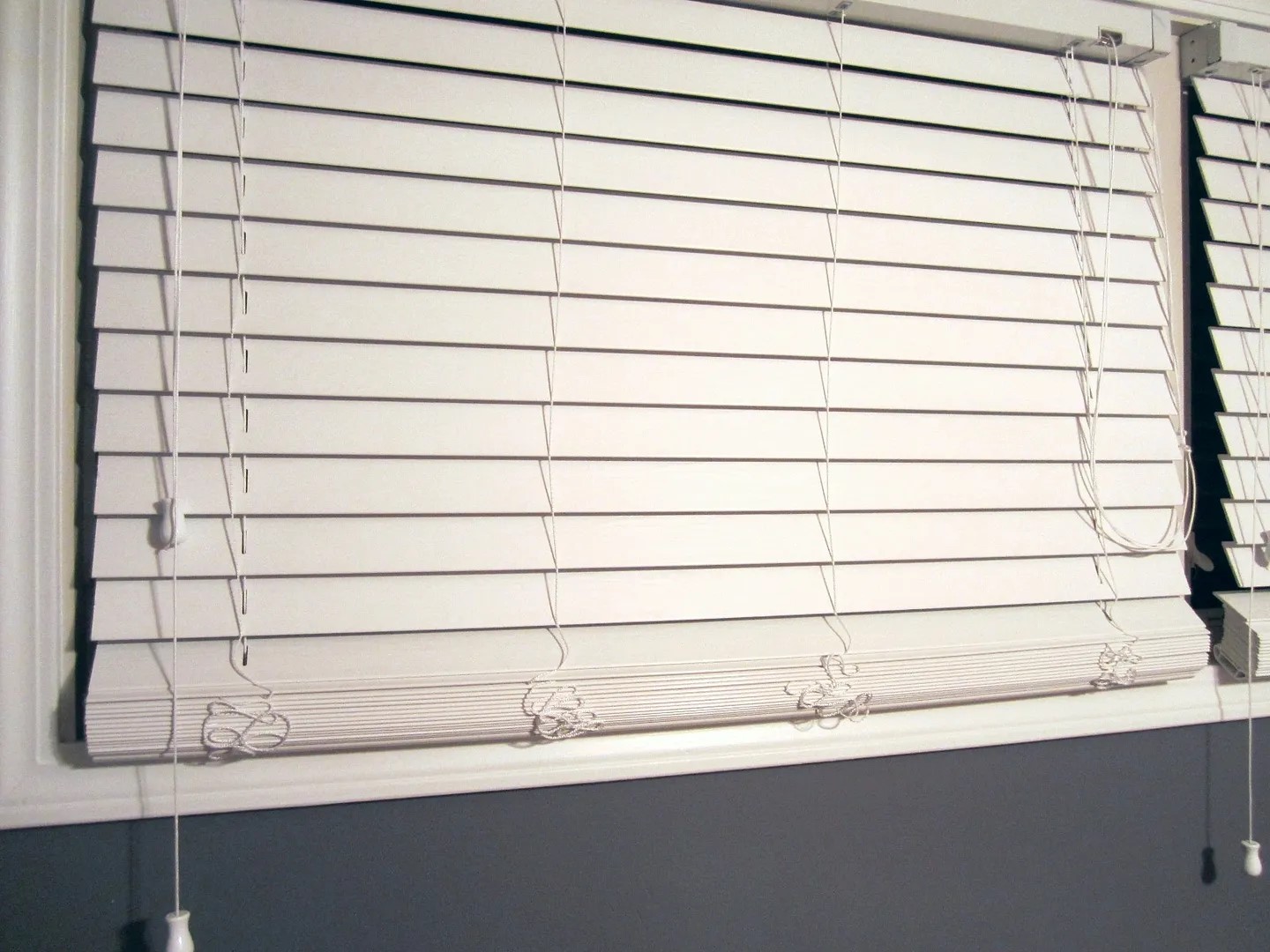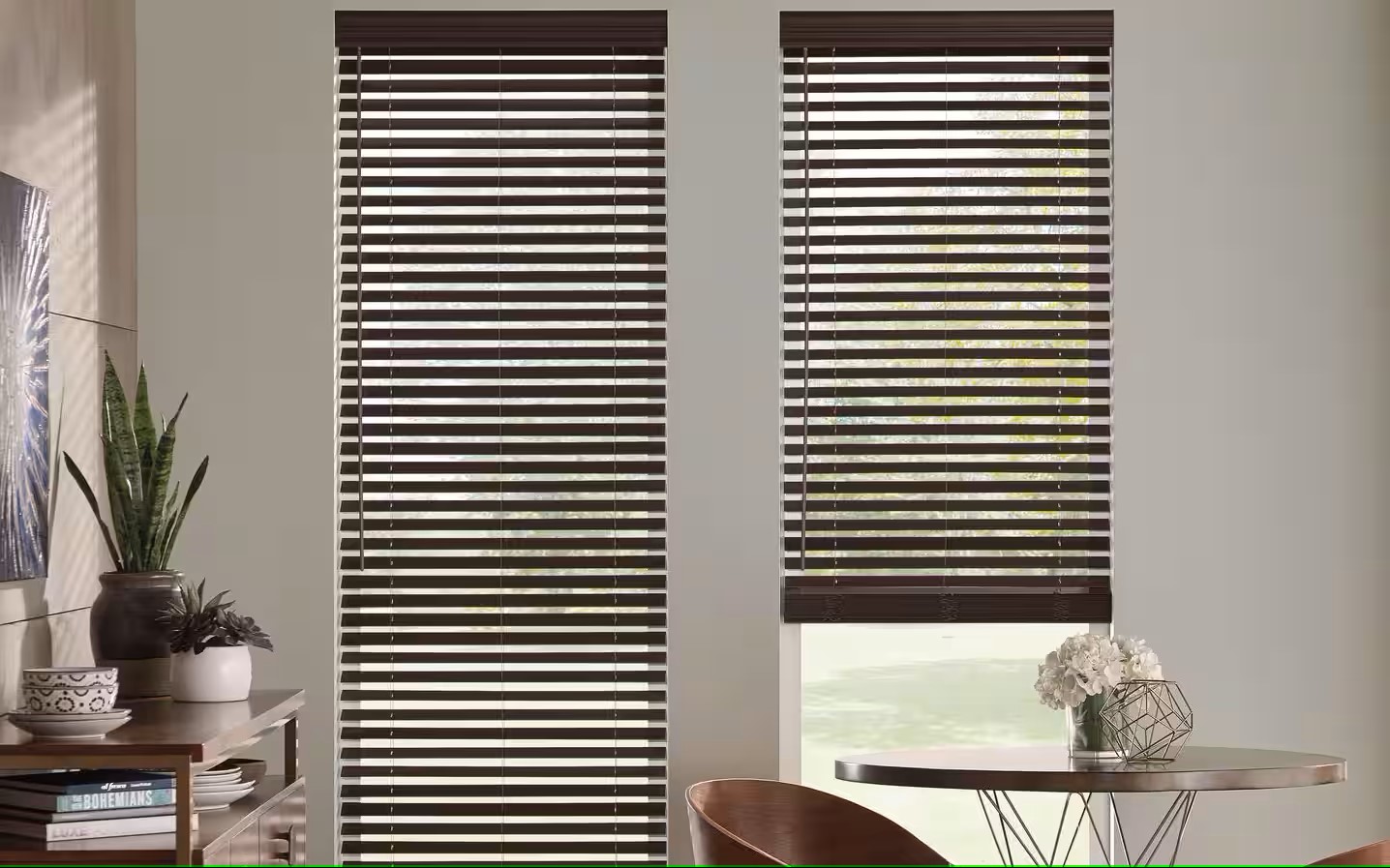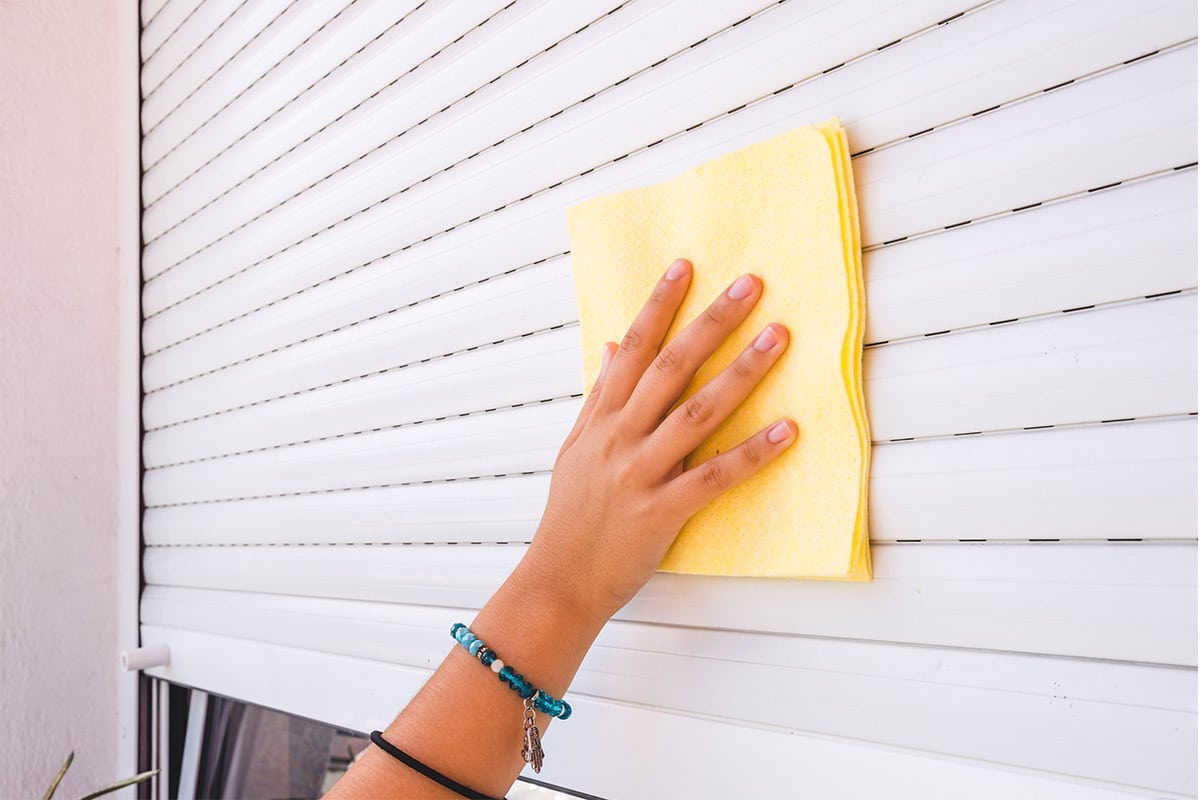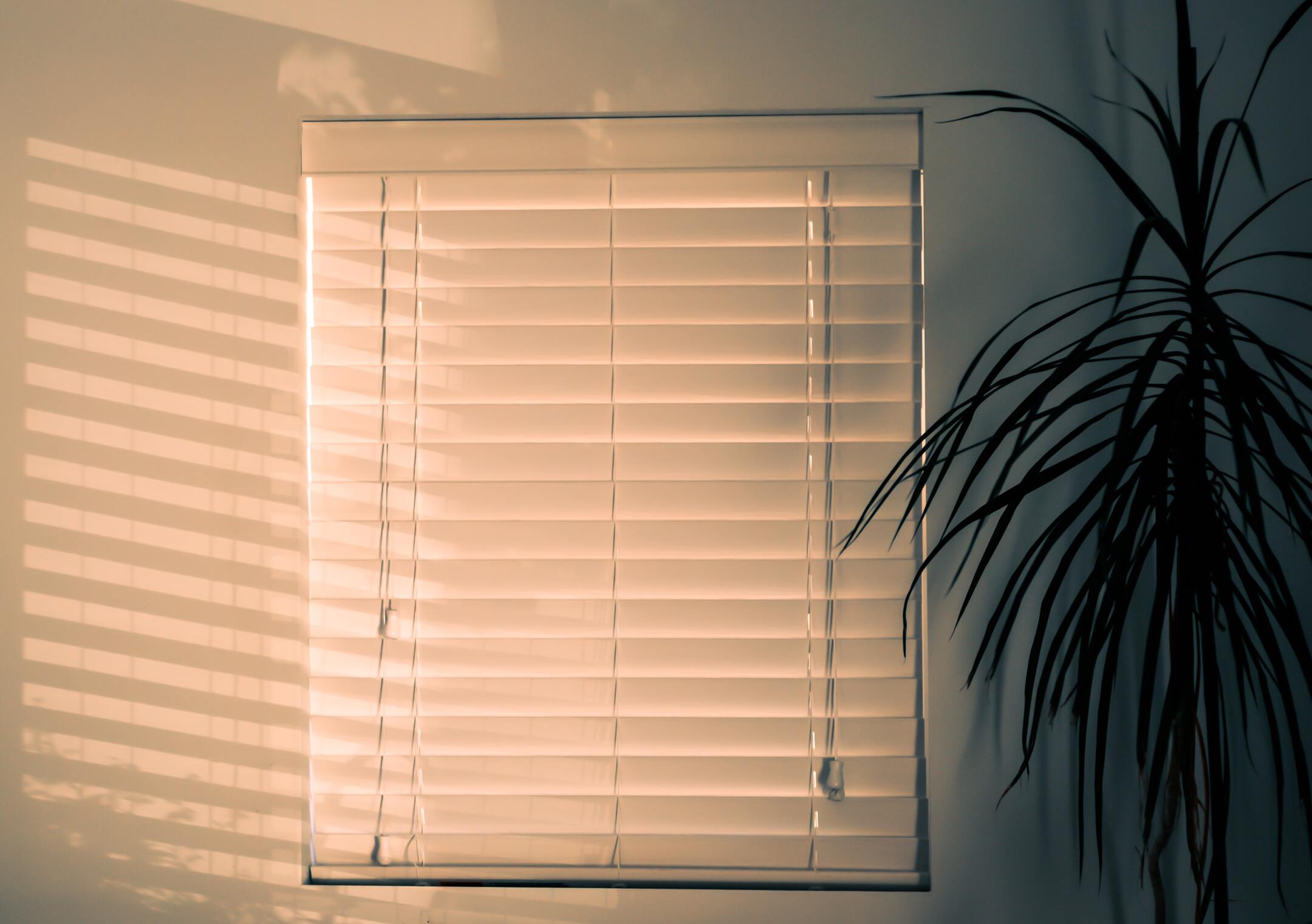

Articles
How To Use Venetian Blinds
Modified: January 23, 2024
Learn how to effectively use Venetian blinds with our informative articles. Discover tips, tricks, and techniques to optimize your blinds for any setting.
(Many of the links in this article redirect to a specific reviewed product. Your purchase of these products through affiliate links helps to generate commission for Storables.com, at no extra cost. Learn more)
Introduction
Venetian blinds have been a popular choice for window treatments for many years. Their versatility, functionality, and classic design have made them a staple in homes and offices alike. Whether you’re looking to enhance privacy, control light levels, or add a touch of elegance to your space, Venetian blinds are an excellent option.
In this article, we will explore the different aspects of using Venetian blinds in your home or office. We will cover everything from choosing the right blinds to installing and maintaining them. By the end, you’ll have a comprehensive understanding of how to make the most out of your Venetian blinds.
So, let’s dive in and discover the world of Venetian blinds!
Key Takeaways:
- Choose Venetian blinds based on material, color, size, light control, and privacy to match your style and practical needs, ensuring a perfect fit and optimal functionality for your space.
- Master the art of adjusting, cleaning, and troubleshooting Venetian blinds to create the perfect ambiance, maintain their pristine condition, and address common issues for long-lasting enjoyment.
Read more: What Are Venetian Blinds
Choosing the Right Venetian Blinds
When it comes to choosing Venetian blinds, there are a few factors to consider to ensure you make the right decision:
Material:
Venetian blinds are available in various materials, including aluminum, wood, and vinyl. Each material has its own unique characteristics. Aluminum blinds are lightweight and durable, making them a popular choice for high-traffic areas. Wood blinds offer a classic and natural aesthetic, while vinyl blinds are moisture-resistant and ideal for humid environments such as bathrooms or kitchens. Consider the style and functionality that best suits your needs.
Color and Finish:
Venetian blinds come in a wide range of colors and finishes. Choose a color that complements your existing decor and enhances the overall aesthetic of the room. From bold and vibrant hues to subtle neutrals, there’s a color for every taste. Additionally, consider the finish of the blinds. Matte finishes provide a more contemporary look, while gloss finishes offer a sleek and polished appearance.
Size:
Ensure that you measure your windows accurately to determine the correct size of the Venetian blinds. The blinds should fit snugly within the window frame for optimal functionality and aesthetics. Take into account both the width and height of the window when selecting the size of the blinds.
Read more: How To Make Venetian Blinds
Light Control:
Consider the level of light control that you desire in the room. Venetian blinds offer excellent light control capabilities due to their adjustable slats. If you prefer a darker room, opt for blinds with wider slats that block out more light. For more flexible light control, choose blinds with smaller slats.
Privacy:
If privacy is a concern, select blinds with a tight slat closure. This will prevent outsiders from peering into your space. Some blinds even have a ‘privacy’ feature that eliminates the small gap between the slats when closed, providing maximum privacy.
By carefully considering these factors, you can choose the perfect Venetian blinds that not only match your style but also meet your practical needs.
Measuring for Installation
Accurate measurements are crucial when it comes to installing Venetian blinds. Follow these steps to ensure proper measurements:
Step 1: Gather the Tools
Before you begin measuring, gather a tape measure, a notepad, and a pen or pencil. These tools will help you record the measurements accurately.
Read more: How To Take Down Venetian Blinds
Step 2: Measure the Width
Start by measuring the width of the window opening. Measure from the inside of the left frame to the inside of the right frame. Take three measurements: one at the top, one in the middle, and one at the bottom. Note down the smallest measurement as this will be the width of your blinds.
Step 3: Measure the Height
Next, measure the height of the window opening. Measure from the top inside frame down to the sill. Again, take three measurements: one on the left side, one in the middle, and one on the right side. Write down the largest measurement as this will be the height of your blinds.
Step 4: Consider Mounting Options
Before finalizing your measurements, consider the mounting options for your blinds. There are two primary mounting options:
- Inside Mount: This is when the blinds are installed within the window frame. Measure the width and height of the window opening exactly as described in steps 2 and 3.
- Outside Mount: This is when the blinds are installed above or outside the window frame. For an outside mount, measure the desired width and height that you want the blinds to cover. Typically, the blinds should extend beyond the window frame by a few inches on each side for optimal light control and privacy.
Step 5: Double-check and Order
Once you have your measurements, double-check that they are accurate. Check for any irregularities in the window frame or any obstructions that may affect the installation. After ensuring accuracy, you can proceed to order your Venetian blinds.
By following these measurement guidelines, you can be confident that your Venetian blinds will fit perfectly and provide a clean and polished look to your windows.
Read more: How To Put Up Venetian Blinds
Installing Your Venetian Blinds
Installing Venetian blinds is a straightforward process that can be done with a few basic tools. Follow these steps to install your blinds:
Step 1: Gather the Tools
Before you begin, gather the necessary tools for installation. You will typically need a drill or screwdriver, measuring tape, a pencil, and a level to ensure accurate alignment.
Step 2: Prepare the Blinds
If your blinds come with a valance or a headrail cover, attach them to the headrail according to the manufacturer’s instructions. This will give your blinds a finished look.
Step 3: Position the Brackets
Hold the blinds up to the window and position them at the desired height. Use a pencil to mark the placement of the brackets on the window frame or wall. Ensure that the brackets are level and aligned with each other.
Read also: 13 Best Venetian Blinds for 2024
Step 4: Install the Brackets
Using a drill or screwdriver, attach the brackets to the marked positions. Make sure to use the appropriate screws or hardware provided by the manufacturer. Ensure the brackets are securely fastened to provide proper support for the blinds.
Step 5: Attach the Headrail
Slide the headrail of the blinds into the brackets and secure it in place. Most blinds have a locking mechanism that ensures a secure fit. Double-check that the blinds are level and adjust if necessary.
Step 6: Test the Operation
Once the blinds are securely installed, test their operation by pulling the lift cord or manipulating the control wand. Ensure that the blinds raise and lower smoothly and that the slats tilt properly.
Step 7: Finishing Touches
Finally, trim any excess cord length to prevent tangling or hazards. If your blinds have a wand control for tilting the slats, ensure it is positioned correctly and operating smoothly.
With these simple steps, you can install your Venetian blinds and transform the look and functionality of your windows. If you are unsure about the installation process, it’s always a good idea to consult the manufacturer’s instructions or seek professional assistance.
Read more: How To Clean Venetian Window Blinds
Adjusting the Slats
One of the key features of Venetian blinds is the ability to adjust the slats for optimal light control and privacy. Follow these steps to adjust the slats of your blinds:
Step 1: Open the Blinds
To open the blinds, pull the lift cord or raise the bottom rail. This will lift the blinds up and allow light to enter the room. You can stop at any desired height to control the amount of light entering the space.
Step 2: Close the Blinds
To close the blinds, simply pull the lift cord or lower the bottom rail. This will lower the blinds down, closing the slats and providing privacy and shade. Again, you can stop at any desired height to control the level of privacy and light blockage.
Step 3: Tilt the Slats
To adjust the angle of the slats, use the tilt mechanism on your blinds. This can be a wand control, a rotating rod, or a tilt cord. Move the control gently to tilt the slats downward or upward, depending on your preference. Tilting the slats downward allows for privacy while still allowing light to enter the room. Tilting them upward directs the light towards the ceiling and provides a brighter atmosphere.
Read more: How To Use Hunter Douglas Blinds
Step 4: Fine-Tune the Slats
If you want to fine-tune the angle of the slats, you can manually adjust them by gently pushing or pulling on individual slats. This allows you to create a customized lighting and privacy effect for your space.
Remember to handle the slats with care to avoid any damage or bending. Additionally, be mindful of the weight distribution on larger blinds to ensure the slats are properly aligned.
By mastering the art of adjusting the slats, you can create the perfect ambiance and control the light levels in your room throughout the day.
Cleaning and Maintenance Tips
Regular cleaning and maintenance can help keep your Venetian blinds looking their best and functioning properly. Follow these tips to keep your blinds in excellent condition:
Dust Regularly
Dust tends to accumulate on the slats of Venetian blinds. To remove dust, you can use a duster, a microfiber cloth, or a vacuum cleaner with a soft brush attachment. Start from the top and work your way down, gently wiping or dusting each slat.
Deep Cleaning
For a deeper clean, you can wash the blinds with a mild detergent and water. Fill a bucket or basin with warm water and a small amount of gentle detergent. Dip a sponge or cloth into the soapy water and wring out any excess moisture. Wipe each slat individually, taking care not to saturate the blinds. Once done, rinse the sponge or cloth and wipe off any remaining soap residue. Finally, use a clean towel or cloth to dry the blinds thoroughly.
Read more: What To Use In Place Of Vertical Blinds
Spot Cleaning
If you notice any stains or stubborn dirt on the blinds, you can spot clean them. Dampen a cloth or sponge with a mixture of water and mild detergent or vinegar. Gently scrub the affected area and then wipe it clean with a damp cloth. Ensure the blinds are completely dry before raising or lowering them.
Avoid Excessive Moisture
Although some Venetian blinds are moisture-resistant, it is still advisable to avoid excessive moisture. If your blinds get wet, wipe them dry immediately to prevent water damage or warping. This is especially important for blinds made of wood or other natural materials.
Inspect for Damages
Regularly inspect your blinds for any damages such as broken slats, loose cords, or malfunctioning mechanisms. If you notice any issues, address them promptly. Replace broken slats or contact a professional to repair any damages.
Operating with Care
Handle your blinds gently when opening, closing, or adjusting the slats. Avoid yanking on the cords or forcefully manipulating the blinds, as this can cause damage. Operate them with care and ensure smooth and gentle movements.
By following these cleaning and maintenance tips, you can extend the lifespan of your Venetian blinds and keep them looking clean and fresh for years to come.
Read more: What Can I Use Instead Of Blinds
Troubleshooting Common Issues
While Venetian blinds are generally reliable and long-lasting, they may encounter some common issues over time. Here are some troubleshooting tips for addressing these issues:
Slats not Turning or Tilting
If you’re having trouble turning or tilting the slats, check if there is any debris or dust accumulation interfering with the mechanism. Clean the mechanism and the slats thoroughly to remove any obstructions. If the issue persists, lubricate the tilt mechanism with a silicone-based spray to ensure smooth operation. Avoid using oil-based lubricants that can attract more dust and debris.
Blinds not Raising or Lowering
If your blinds are not raising or lowering, check if the lift cord is tangled or jammed. Gently untangle any knots or obstructions in the cord. If the lift cord is damaged or frayed, it may need to be replaced. Contact the manufacturer or a professional for assistance. Avoid pulling or forcing the blinds, as this can cause further damage.
Uneven or Crooked Blinds
If your blinds are uneven or appear crooked, check if the brackets are securely fastened. Adjust the brackets and ensure they are level and aligned correctly. If the issue persists, inspect the slats for any damage, warping, or misalignment. Replace any damaged slats to restore the balance and evenness of the blinds.
Read more: How To Lengthen Blinds
Stiff or Difficult Operation
If your blinds are difficult to operate or feel stiff, they may need lubrication. Apply a small amount of silicone-based lubricant to the mechanisms, including the lift cord and tilt mechanism. Work the lubricant into the mechanism by gently operating the blinds. This should help restore smooth and easy operation.
Noise or Rattling
If your blinds are making noise or rattling when opening or closing, check if any screws or brackets are loose. Tighten any loose screws or brackets to eliminate the noise. If the issue persists, inspect the slats for any loose or broken components that may cause rattling. Replace or repair any damaged slats to reduce noise and ensure proper functionality.
If you encounter any issues that you cannot resolve on your own or if the blinds require extensive repair, it is recommended to seek professional assistance. They will have the expertise and knowledge to handle more complex problems and ensure your blinds are working optimally.
Conclusion
Venetian blinds offer a timeless and versatile solution for controlling light, enhancing privacy, and adding style to any space. By choosing the right blinds, measuring accurately, and installing them properly, you can transform the look and functionality of your windows. Adjusting the slats allows you to fine-tune the lighting and privacy levels, while regular cleaning and maintenance ensure that your blinds stay in top condition.
Remember to choose blinds that suit your style and needs, considering factors such as material, color, size, light control, and privacy. Accurate measuring is essential to ensure a proper fit, whether you opt for an inside or outside mount. Once installed, you can adjust the slats to control the amount of light entering the room and maintain your desired level of privacy.
Regular cleaning and maintenance will keep your blinds looking their best and functioning smoothly. Dusting regularly and performing deep cleaning when needed will remove dirt and grime. Be cautious with moisture and inspect for any damages or issues, addressing them promptly to prevent further complications.
If you encounter common issues such as slats not turning, blinds not raising or lowering, unevenness, stiffness, or noise, follow the troubleshooting tips mentioned to resolve them. Seek professional assistance if needed, especially for complex repairs.
By following these tips and guidelines, you can make the most out of your Venetian blinds, creating a comfortable and stylish environment in your home or office. So, go ahead and embrace the beauty and functionality of Venetian blinds for your windows today!
Frequently Asked Questions about How To Use Venetian Blinds
Was this page helpful?
At Storables.com, we guarantee accurate and reliable information. Our content, validated by Expert Board Contributors, is crafted following stringent Editorial Policies. We're committed to providing you with well-researched, expert-backed insights for all your informational needs.
